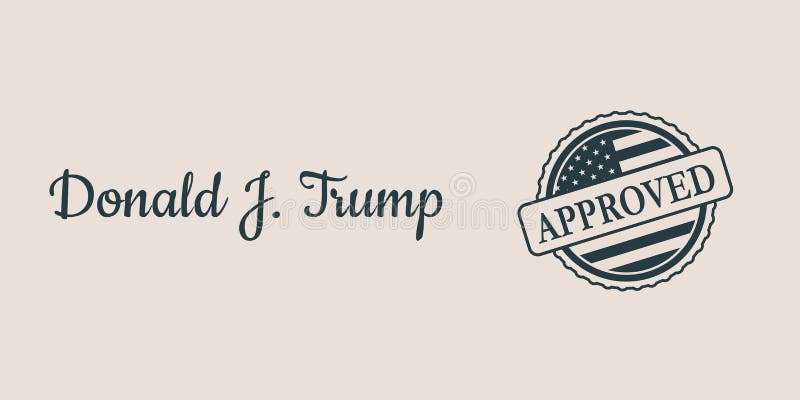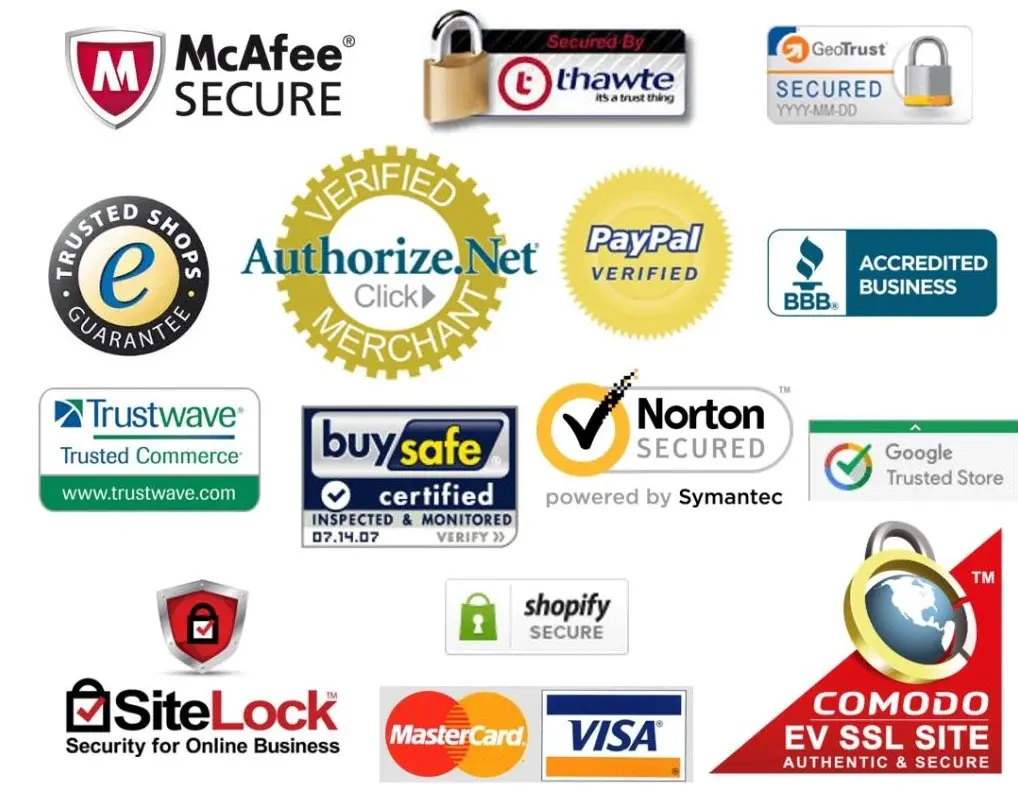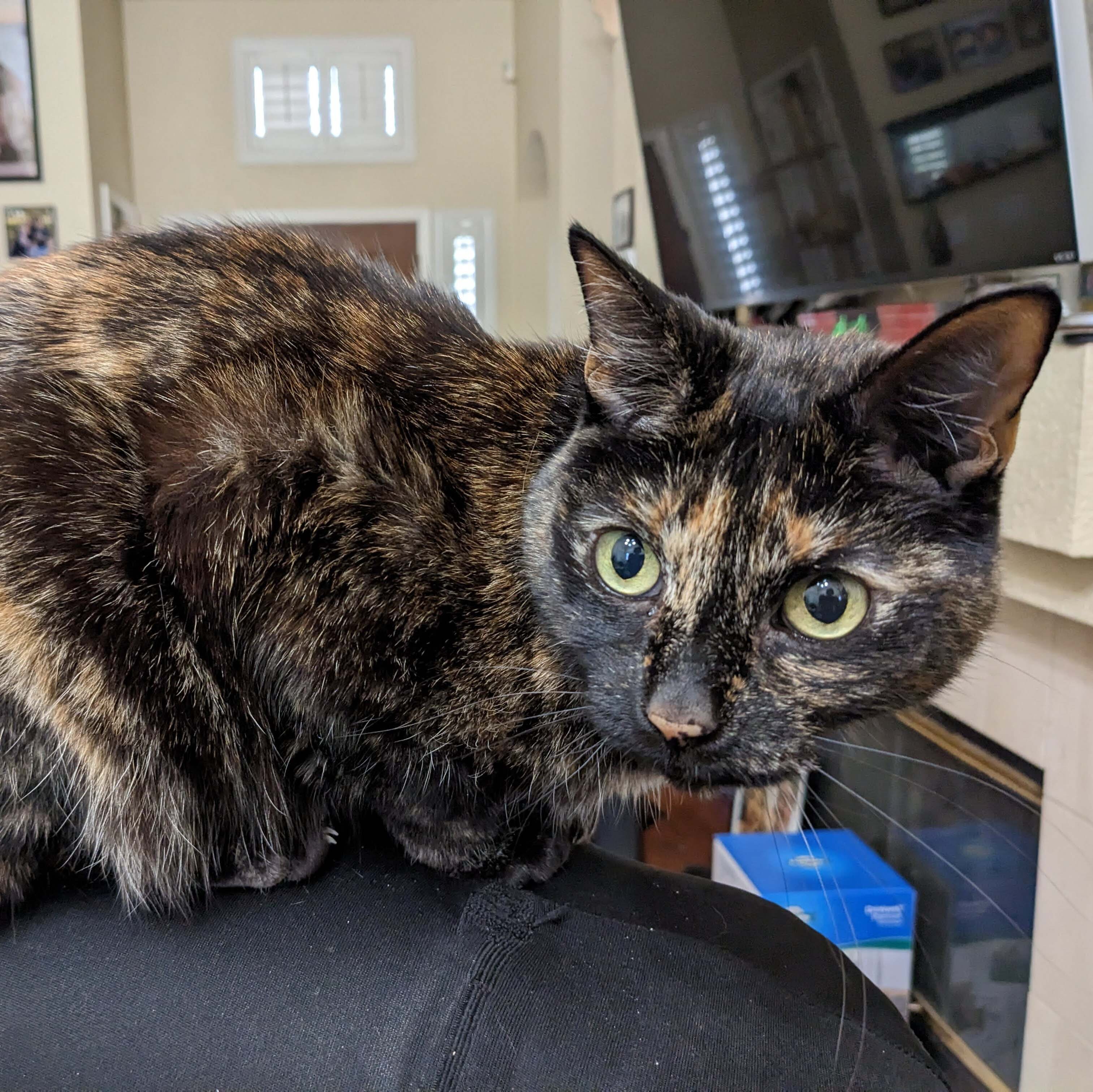The White House wants to ‘cryptographically verify’ videos of Joe Biden so viewers don’t mistake them for AI deepfakes::Biden’s AI advisor Ben Buchanan said a method of clearly verifying White House releases is “in the works.”
Digital signature as a means of non repudiation is exactly the way this should be done. Any official docs or releases should be signed and easily verifiable by any public official.
Maybe deepfakes are enough of a scare that this becomes standard practice, and protects encryption from getting government backdoors.

Hey, congresscritters didn’t give a shit about robocalls till they were the ones getting robocalled.
We had a do not call list within a year and a half.
That’s the secret, make it affect them personally.
Doesn’t that prove that government officials lack empathy? We see it again and again but still we keep putting these unfeeling bastards in charge.
Well sociopaths are really good at navigating power hierarchies and I’m not sure there is an ethical way of keeping them from holding office.
It really depends on their motivation. The ones we need to keep out are the ones who enjoy hurting others or don’t care at all.
Would someone have a high level overview or ELI5 of what this would look like, especially for the average user. Would we need special apps to verify it? How would it work for stuff posted to social media
linking an article is also ok :)
Depending on the implementation, there are two cryptographic functions that might be used (perhaps in conjunction):
-
Cryptographic hash: An arbitrary amount of data (like a video file) is used to create a “hash”—a shorter, (effectively) unique text string. Anyone can run the file through the same function to see if it produces the same hash; if even a single bit of the file is changed, the hash will be completely different and you’ll know the data was altered.
-
Public key cryptography: A pair of keys are created, one of which can only encrypt data (but can’t decrypt its own output), and the other, “public” key can only decrypt data that was encrypted by the first key. Users (like the White House) can post their public key on their website; then if a subsequent message purporting to come from that user can be decrypted using their public key, it proves it came from them.
a shorter, (effectively) unique text string
A note on this. There are other videos that will hash to the same value as a legitimate video. Finding one that is coherent is extraordinarily difficult. Maybe a state actor could do it?
But for practical purposes, it’ll do the job. Hell, if a doctored video with the same hash comes out, the White House could just say no, we punished this one, and that alone would be remarkable.
Finding one that is coherent is extraordinarily difficult.
You’d need to find one that was not just coherent, but that looked convincing and differed in a way that was useful to you—and that likely wouldn’t be guaranteed, even theoretically.
Even for a 4096 bit hash (which isn’t used afaik, usually only 1024 bit is used (but this could be outdated)), you only need to change 4096 bits on average. Even for a still 1080p image, that’s 1920x1080 pixels. If you change the least significant bit of each color channel, you get 6,220,800 bits you can change within anyone noticing. That means on average there are 1,518 identical-looking variations of any image with a given 4096 bit hash, on average. This goes down a lot when you factor in compression: those least significant bits aren’t going to stay the same. But using a video brings it up by orders of magnitude: rather than one image, you can tweak colors in every frame The difficulty doesn’t come from the existence, it comes because you need to check 2⁵¹² = 10¹⁵⁴ different images to guarantee you’ll find a match. Hash functions are designed to take a while to compute, so you’d have to run a supercomputer for an extremely long time to brute force a hash collision
Most hash functions are 256 bit (they’re symmetric functions, they don’t need more in most cases).
There are arbitrary length functions (called XOF instead of hash) which built similarly (used when you need to generate longer random looking outputs).
Other than that, yeah, math shows you don’t need to change more data in the file than the length of the hash function internal state or output length (whichever is less) to create a collision. The reason they’re still secure is because it’s still extremely difficult to reverse the function or bruteforce 2^256 possible inputs.
Yeah I was using a high length at first because even if you overestimate, that’s still a lot. I did 512 for the second because I don’t know a ton about cryptography but that’s the largest SHA output
Pigeon hole principle says it does for any file substantially longer than the hash value length, but it’s going to be hard to find
There are other videos that will hash to the same value
This concept is known as ‘collision’ in cryptography. While technically true for weaker key sizes, there are entire fields of mathematics dedicated to probably ensuring collisions are cosmically unlikely. MD5 and SHA-1 have a small enough key space for collisions to be intentionally generated in a reasonable timeframe, which is why they have been deprecated for several years.
To my knowledge, SHA-2 with sufficiently large key size (2048) is still okay within the scope of modern computing, but beyond that, you’ll want to use Dilithium or Kyber CRYSTALS for quantum resistance.
SHA family and MD5 do not have keys. SHA1 and MD5 are insecure due to structural weaknesses in the algorithm.
Also, 2048 bits apply to RSA asymmetric keypairs, but SHA1 is 160 bits with similarly sized internal state and SHA256 is as the name says 256 bits.
ECC is a public key algorithm which can have 256 bit keys.
Dilithium is indeed a post quantum digital signature algorithm, which would replace ECC and RSA. But you’d use it WITH a SHA256 hash (or SHA3).
Good catch, and appreciate the additional info!
Public key cryptography would involve signatures, not encryption, here.
-
The best way this could be handled is a green check mark near the video that you could click on it and it would give you all the meta data of the video (location, time, source, etc) with a digital signature (what would look like a random string of text) that you could click on and your browser would show you the chain of trust, where the signature came from, that it’s valid, probably the manufacturer of the equipment it was recorded on, etc.
Do not show a checkmark by default! This is why cryptographers kept telling browsers to de-emphasize the lock icon on TLS (HTTPS) websites. You want to display the claimed author and if you’re able to verify keypair authenticity too or not.
Fair point, I agree with this. There should probably be another icon in the browser that shows if all, some, or none of the media on a page has signatures that can be validated. Though that gets messy as well, because what is “media”? Things can be displayed in a web canvas or SVG that appears to be a regular image, when in reality it’s rendered on the fly.
Security and cryptography UX is hard. Good point, thanks for bringing that up! Btw, this is kind of my field.
I run /r/crypto at reddit (not so active these days due to needing to keep it locked because of spam bots, but it’s not dead yet), usability issues like this are way too common
I ran /r/cryptotechnology for years, and am good friends with the /r/cc mods. Reddit is a mess though, especially in the crypto areas.
Adobe is actually one of the leading actors in this field, take a look at the Content Authenticity Initiative (https://contentauthenticity.org/)
Like the other person said, it’s based on cryptographic hashing and signing. Basically the standard would embed metadata into the image.
Not very well apparently
For the average end-user, it would look like “https”. You would not have to know anything about the technical background. Your browser or other media player would display a little icon showing that the media is verified by some trusted institution and you could learn more with a click.
In practice, I see some challenges. You could already go to the source via https, EG whitehouse.gov, and verify it that way. An additional benefit exists only if you can verify media that have been re-uploaded elsewhere. Now the user needs to check that the media was not just signed by someone (EG whitehouse.gov. ru), but if it was really signed by the right institution.
As someone points out above, this just gives them the power to not authenticate real videos that make them look bad…
I honestly feel strategies like this should be mitigated by technically savvy journalism, or even citizen journalism. 3rd parties can sign and redistribute media in the public domain, vouching for their origin. While that doesn’t cover all the unsigned copies in existence, it provides a foothold for more sophisticated verification mechanisms like a “tineye” style search for media origin.
Videos by third parties, like Trump’s pussy grabber clip, would obviously have to be signed by them. After having thought about it, I believe this is a non-starter.
It just won’t be as good as https. Such a signing scheme only makes sense if the media is shared away from the original website. That means you can’t just take a quick look at the address bar to make sure you are not getting phished. That doesn’t work if it could be any news agency. You have to make sure that the signer is really a trusted agency and not some scammy lookalike. That takes too much care for casual use, which defeats the purpose.
Also, news agencies don’t have much of an incentive to allow sharing their media. Any cryptographic signature would only make sense for them if directs users to their site, where they can make money. Maybe the potential for more clicks - basically a kind of clickable watermark on media - could make this take off.
It needs some kind of handler, but we mostly have those in place. A web browser could be the handler for instance. A web browser has the green dot on the upper left, telling you a page is secure, that https is on and valid. This could work like that, the browser can verify the video and display a green or red dot in the corner, the user could just mouse over it/tap on it to see who it’s verified to be from. But it’s up to the user to mouse over it and check if it says whitehouse.gov or dr-evil-mwahahaha.biz
TL;DR: one day the user will see an overlay or notification that shows an image/movie is verified as from a known source. No extra software required.
Honestly, I can see this working great in future web browsers. Much like the padlock in the URL bar, we could see something on images that are verified. The image could display a padlock in the lower-left corner or something, along with the name of the source, demonstrating that it’s a securely verified asset. “Normal” images would be unaffected. The big problem is how to put something on the page that cannot be faked by other means.
It’s a little more complicated for software like phone apps for X or Facebook, but doable. The problem is that those products must choose to add this feature. Hopefully, losing reputation to being swamped with unverifiable media will be motivation enough to do so.
The underlying verification process is complex, but should be similar to existing technology (e.g. GPG). The key is that images and movies typically contain a “scratch pad” area in the file for miscellaneous stuff (metadata). This is where the image’s author can add a cryptographic signature for the file itself. The user would never even know it’s there.
Probably you’d notice a bit of extra time posting for the signature to be added, but that’s about it, the responsibility for verifying the signature would fall to the owners of the social media site and in the circumstances where someone asks for a verification, basically imagine it as a libel case on fast forward, you file a claim saying “I never said that”, they check signatures, they shrug and press the delete button and erase the post, crossposts, and if it’s really good screencap posts and those crossposts of the thing you did not say but is still being attributed falsely to your account or person.
It basically gives absolute control of a person’s own image and voice to themself, unless a piece of media is provable to have been made with that person’s consent, or by that person themself, it can be wiped from the internet no trouble.
Where it comes to second party posters, news agencies and such, it’d be more complicated but more or less the same, with the added step that a news agency may be required to provide some supporting evidence that what they said is not some kind of misrepresentation or such as the offended party filing the takedown might be trying to insist for the sake of their public image.
Of course there could still be a YouTube “Stats for Nerds”-esque addin to the options tab on a given post that allows you to sign-check it against the account it’s attributing something to, and a verified account system could be developed that adds a layer of signing that specifically identifies a published account, like say for prominent news reporters/politicians/cultural leaders/celebrities, that get into their own feed so you can look at them or not depending on how ya be feelin’ that particular scroll session.
Huh. They actually do something right for once instead of spending years trying to ban A.I tools. I’m pleasantly surprised.
Bingo. If, at the limit, the purpose of a generative AI is to be indistinguishable from human content, then watermarking and AI detection algorithms are absolutely useless.
The ONLY means to do this is to have creators verify their human-generated (or vetted) content at the time of publication (providing positive proof), as opposed to attempting to retroactively trying to determine if content was generated by a human (proving a negative).
I mean banning use cases is deffo fair game, generating kiddy porn should be treated as just as heinous as making it the “traditional” way IMO
Idk, making CP where a child is raped vs making CP where no children are involved seem on very different levels of bad to me.
Both utterly repulsive, but certainly not exactly the same.
One has a non-consenting child being abused, a child that will likely carry the scars of that for a long time, the other doesn’t. One is worse than the other.
E: do the downvoters like… not care about child sexual assault/rape or something? Raping a child and taking pictures of it is very obviously worse than putting parameters into an AI image generator. Both are vile. One is worse. Saying they’re equally bad is attributing zero harm to the actual assaulting children part.
Man imagine trying to make the case for Ethical Child Rape Material.
You are not going to get anywhere with this line of discussion, stop now before you say something that deservedly puts you on a watchlist.
I’m not making the case for that at all, and I find you attempting to make out that I am into child porn a disgusting debate tactic.
“Anybody who disagrees with my take is a paedophile” is such a poor argument and serves only to shut down discussion.
It’s very obviously not what I’m saying, and anybody with any reading comprehension at all can see that plainly.
You’ll notice I called it “utterly repulsive” in my comment - does that sound like the words of a child porn advocate?
The fact that you apparently don’t care at all about the child suffering side of it is quite troubling. If a child is harmed in its creation, then that’s obviously worse than some creepy fuck drawing loli in Inkscape or typing parameters into an AI image generator. I can’t believe this is even a discussion.
Yikes! The implication is that it does not matter if a child was victimized. It’s “heinous”, not because of a child’s suffering, but because… ?
Man imagine trying to make “ethical child rape content” a thing. What were the lolicons not doing it for ya anymore?
As for how it’s exactly as heinous, it’s the sexual objectification of a child, it doesn’t matter if it’s a real child or not, the mere existence of the material itself is an act of normalization and validation of wanting to rape children.
Being around at all contributes to the harm of every child victimised by a viewer of that material.
I see. Since the suffering of others does not register with you, you must believe that any “bleeding heart liberal” really has some other motive. Well, no. Most (I hope, but at least some) people are really disturbed by the suffering of others.
I take the “normalization” argument seriously. But I note that it is not given much credence in other contexts; violent media, games, … Perhaps the “gateway drug” argument is the closest parallel.
In the very least, it drives pedophiles underground where they cannot be reached by digital streetworkers, who might help them not to cause harm. Instead, they form clandestine communities that are already criminal. I doubt that makes any child safer. But it’s not about children suffering for you, so whatever.
Man imagine continuing to try and argue Ethical Child Rape Content should be a thing.
If we want to make sweeping attacks on character, I’d rather be on the “All Child Rape Material is Bad” side of the argument but whatever floats ya boat.
Yeah good luck getting to general public to understand what “cryptographically verified” videos mean
The general public doesn’t have to understand anything about how it works as long as they get a clear “verified by …” statement in the UI.
It could work the same way the padlock icon worked for SSL sites in browsers back in the day. The video player checks the signature and displays the trusted icon.
It needs to focus on showing who published it, not the icon
Democrats will want cryptographically verified videos, Republicans will be happy with a stamp that has trumps face on it.


“Not everybody will use it and it’s not 100% perfect so let’s not try”
That’s not the point. It’s that malicious actors could easily exploit that lack of knowledge to trick users into giving fake videos more credibility.
If I were a malicious actor, I’d put the words “✅ Verified cryptographically by the White House” at the bottom of my posts and you can probably understand that the people most vulnerable to misinformation would probably believe it.
I don’t blame them for wanting to, but this won’t work. Anyone who would be swayed by such a deepfake won’t believe the verification if it is offered.
Agreed and I still think there is value in doing it.
I honestly do not see the value here. Barring maybe a small minority, anyone who would believe a deepfake about Biden would probably also not believe the verification and anyone who wouldn’t would probably believe the administration when they said it was fake.
The value of the technology in general? Sure. I can see it having practical applications. Just not in this case.
It helps journalists, etc, when files have digital signatures verifying who is attesting to it. If the WH has their own published public key for signing published media and more then it’s easy to verify if you have originals or not.
Problem is that broadly speaking, you would only sign the stuff you want to sign.
Imagine you had a president that slapped a toddler, and there was a phone video of it from the parents. The white house isn’t about to sign that video, because why would they want to? Should the journalists discard it because it doesn’t carry the official White House blessing?
It would limit the ability for someone to deep fake an official edit of a press briefing, but again, what if he says something damning, and the ‘official’ footage edits it out, would the press discard their own recordings because they can’t get it signed, and therefore not credible?
That’s the fundamental challenge in this sort of proposal, it only allows people to endorse what they would have wanted to endorse in the first place, and offers no mechanism to prove/disprove third party sources that are the only ones likely to carry negative impressions.
But then the journalists have to check if the source is trustworthy, as usual. Then they can add their own signature to help other papers check it
To that extent, we already have that.
I go to ‘https://cnn.com’, I have cryptographic verification that cnn attests to the videos served there. I go to youtube, and I have assurances that the uploader is authenticated as the name I see in the description.
If I see a repost of material claimed to be from a reliable source, I can go chase that down if I care (and I often do).
It’s not a challenge, because this is only valid for photos and videos distributed by the White House, which they already wouldn’t do.
The challenge is that it would have to leave out all the photos and videos taken by journalists and spectators. That’s where the possible baby slapping would come out, and we would still have no idea whether to trust it
I don’t even think that matters when Trump’s people are watching media that won’t verify it anyway.
The world is not black and white. There are not just trump supporters and Biden supporters. I know it’s hard to grasp but there are tons of people in the the toss up category.
You’re right that this probably won’t penetrate the deeply perverted world of trump cultists, but the wh doesn’t expect to win the brainwashed over. They are going for those people who could go one way or another.
I find it hard to believe that there are too many people who truly can’t decide between Trump and Biden at this point. The media really wants a horse race here, but if your mind isn’t made up by this point, I think you’re unlikely to vote in the first place.
I’ll be happy to be proven wrong and have this sway people who might vote for Trump to vote for Biden though.
So, the race is basically already decided but there is a conspiracy among the media and polling companies to make it look like the race is actually close and that there are undecides. Of course, the only way to prove this wrong would be with polls, but we’ve conveniently already just rejected that evidence. Very convenient.
If a cryptographic claim/validation is provided then anyone refuting the claims can be seen to be a bad faith actor. Voters are one dimension of that problem but mainstream media being able to validate election videos is super important both domestically, but also internationally as the global community needs to see efforts being undertaken to preserve free and fair elections. This is especially true given the consequences if america’s enemies are seen to have been able to steer the election.
I don’t think that’s what this is for. I think this is for reasonable people, as well as for other governments.
Besides, passwords can be phished or socially engineered, and some people use “abc123.” Does that mean we should get rid of password auth?
Deepfakes could get better. And if they do, a lot more people will start to get fooled
It would become quite easy to dismiss anything for not being cryptographically verified simply by not cryptographically verifying.
I can see the benefit of having such verification but I also see how prone it might be to suppressing unpopular/unsanctioned journalism.
Unless the proof is very clear and easy for the public to understand the new method of denial just becomes the old method of denial.
It would be nice if none of this was necessary… but we don’t live in that world. There is a lot of straight up bullshit in the news these days especially when it comes to controversial topics (like the war in Gaza, or Covid).
You could go a really long way by just giving all photographers the ability to sign their own work. If you know who took the photo, then you can make good decisions about wether to trust them or not.
Random account on a social network shares a video of a presidential candidate giving a speech? Yeah maybe don’t trust that. Look for someone else who’s covered the same speech instead, obviously any real speech is going to be covered by every major news network.
That doesn’t stop a ordinary people from sharing presidential speeches on social networks. But it would make it much easier to identify fake content.
This doesn’t solve anything. The White House will only authenticate videos which make the President look good. Curated and carefully edited PR. Maybe the occasional press conference. The vast majority of content will not be authenticated. If anything this makes the problem worse, as it will give the President remit to claim videos which make them look bad are not authenticated and should therefore be distrusted.
It needs to be more general. A video should have multiple signatures. Each signature relies on the signer’s reputation, which works both ways. It won’t help those who don’t care about their reputation, but will for those that do.
A photographer who passes off a fake photo as real will have their reputation hit, if they are caught out. The paper that published it will also take a hit. It’s therefore in the paper’s interest to figure out how trustworthy the supplier is.
I believe canon recently announced a camera that cryptographically signs photographs, at the point of creation. At that point, the photographer can prove the camera, the editor can prove the photographer, the paper can prove the editor, and the reader can prove the newspaper. If done right, the final viewer can also prove the whole chain, semi-independently. It won’t be perfect (far from it) but might be the best will get. Each party wants to protect their reputation, and so has a vested interest in catching fraud.
For this to work, we need a reliable way to sign images multiple times, as well as (optionally) encode an edit history into it. We also need a quick way to match cryptographic keys to a public key.
An option to upload a time stamped key to a trusted 3rd party would also be of significant benefit. Ironically, Blockchain might actually be a good use for this. In case a trusted 3rd can’t be established.
I don’t think that’s practical or particularly desirable.
Today, when you buy something, EG a phone, the brand guarantees the quality of the product, and the seller guarantees the logistics chain (that it’s unused, not stolen, not faked, not damaged in transport, …). The typical buyer does not care about the parts used, the assembly factory, etc.
When a news source publishes media, they vouch for it. That’s what they are paid for (as it were). If the final viewer is expected to check the chain, they are asked to do the job of skilled professionals for free. Do-your-own-research rarely works out, even for well-educated people. Besides, in important cases, the whole chain will not be public to protect sources.
It wouldn’t be intended for day to day use. It’s intended as a audit trail/chain of custody. Think of it more akin to a git history. As a user, you generally don’t care, however it can be excellent for retrospective analysis, when someone/something does screw up.
You would obviously be able to strip it out, but having it as a default would be helpful with openness.
Great points and I agree. I also think the signature needs to be built into the stream in a continuous fashion so that snippets can still be authenticated.
Agreed. Embed a per-frame signature it into every key frame when encoding. Also include the video file time-stamp. This will mean any clip longer than around 1 second will include at least 1 signed frame.
Merkle tree hashes exists for this purpose
Note that videos uses “keyframes” so you can’t extract arbitrary frames in isolation, you need to pull multiple if the frame you’re snapshotting isn’t a keyframe itself
I’ve thought about this too but I’m not sure this would work. First you could hack the firmware of a cryptographically signed camera. I already read something about a camera like this that was hacked and the private key leaked. You could have an individual key for each camera and then revoke it maybe.
But you could also photograph a monitor or something like that, like a specifically altered camera lens.
Ultimately you’d probably need something like quantum entangled photon encoding to prove that the photons captured by the sensor were real photons and not fake photons. Like capturing a light field or capturing a spectrum of photons. Not sure if that is even remotely possible but it sounds cool haha.
Look up transparency logs for that last part, it’s already used for TLS certificates
I don’t understand your concern. Either it’ll be signed White House footage or it won’t. They have to sign all their footage otherwise there’s no point to this. If it looks bad, don’t release it.
Then this exercise is a waste of time. All the hard hitting journalism which presses the President and elicits a negative response will be unsigned, and will be distributed across social media as it is today: without authentication. All the videos for which the White House is concerned about authenticity will continue to circulate without any cause for contention.
Anyone can digitally sign anything (maybe not easily or for free). The Whitehouse can verify or not verify whatever they choose but if you, as a journalist let’s say, want to give credence to video you distribute you’ll want to digitally sign it. If a video switches hands several times without being signed it might as well have been cooked up by the last person that touched it.
That’s fine?
Signatures aren’t meant to prove authenticity. They’re proving the source which you can use to weigh the authenticity.
I think the confusion comes from the fact that cryptographic signatures are mostly used in situations where proving the source is equivalent to proving authenticity. Proving a text message is from me proves the authenticity as there’s no such thing as doctoring my own text message. There’s more nuance when you’re using signatures to prove a source which may or may not be providing trustworthy data. But there is value in at least knowing who provided the data.
Fucking finally. We’ve had this answer to digital fraud for ages.
Sounds like a very Biden thing (or for anyone well into their Golden Years) to say, “Use cryptography!” but it’s not without merit. How do we verify file integrity? How to we digitally sign documents?
The problem we currently have is that anything that looks real tends to be accepted as real (or authentic). We can’t rely on humans to verify authenticity of audio or video anymore. So for anything that really matters we need to digitally sign it so it can be verified by a certificate authority or hashed to verify integrity.
This doesn’t magically fix deep fakes. Not everyone will verify a video before distribution and you can’t verify a video that’s been edited for time or reformatted or broadcast on the TV. It’s a start.
We’ve had this discussion a lot in the Bitcoin space. People keep arguing it has to change so that “grandma can understand it” but I think that’s unrealistic. Every technology has some inherent complexities that cannot be removed and people have to learn if they want to use it. And people will use it if the motivation is there. Wifi has some inherent complexities people have become comfortable with. People know how to look through lists of networks, find the right one, enter the passkey or go through the sign on page. Some non-technical people know enough about how Wifi should behave to know the internet connection might be out or the route might need a reboot. None of this knowledge was commonplace 20 years ago. It is now.
The knowledge required to leverage the benefits of cryptographic signatures isn’t beyond the reach of most people. The general rules are pretty simple. The industry just has to decide to make the necessary investments to motivate people.
The President’s job isn’t really to be an expert on everything, the job is more about being able to hire people who are experts.
If this was coupled with a regulation requiring social media companies to do the verification and indicate that the content is verified then most people wouldn’t need to do the work to verify content (because we know they won’t).
It obviously wouldn’t solve every problem with deepfakes, but at least it couldn’t be content claiming to be from CNN or whoever. And yes someone editing content from trusted sources would make that content no longer trusted, but that’s actually a good thing. You can edit videos to make someone look bad, you can slow it down to make a person look drunk, etc. This kind of content should not considered trusted either.
Someone doing a reaction video going over news content or whatever could have their stuff be considered trusted, but it would be indicated as being content from the person that produced the reaction video not as content coming from the original news source. So if you see a “news” video that has it’s verified source as “xXX_FlatEarthIsReal420_69_XXx” rather than CNN, AP News, NY Times, etc, you kinda know what’s up.
the technology to do this has existed for decades and it’s crazy to me that people aren’t doing it all the time yet
I’m sure they do. AI regulation probably would have helped with that. I feel like congress was busy with shit that doesn’t affect anything.
I salute whoever has the challenge of explaining basic cryptography principles to Congress.
Might just as well show a dog a card trick.
That’s why I feel like this idea is useless, even for the general population. Even with some sort of visual/audio based hashing, so that the hash is independant of minor changes like video resolution which don’t change the content, and with major video sites implementing a way for the site to verify that hash matches one from a trustworthy keyserver equivalent…
The end result for anyone not downloading the videos and verifying it themselves is the equivalent of those old ”✅ safe ecommerce site, we swear" images. Any dedicated misinformation campaign will just fake it, and that will be enough for the people who would have believed the fake to begin with.
I see no difference between creating a fake video/image with AI and Adobe’s packages. So to me this isn’t an AI problem, it’s a problem that should have been resolved a couple of decades ago.
Why not just official channels of information, e.g. White house Mastodon instance with politicians’ accounts, government-hosted, auto-mirrored by third parties.
When it comes to misinformation I always remember when I was a kid I’m the early 90s, another kid told me confidently that the USSR had landed on Mars, gathered rocks, filmed it and returned to earth(it now occurs to me that this homeschooled kid was confusing the real moon landing.) I remember knowing it was bullshit but not having a way to check the facts. The Internet solved that problem. Now, by God , the Internet has recreated the same problem.
I think this is a great idea. Hopefully it becomes the standard soon, cryptographically signing clips or parts of clips so there’s no doubt as to the original source.
what if I meet Joe and take a selfie of both of us using my phone? how will people know that my selfie is an authentic Joe Biden?
Ultimately, reputation based trust, combined with cryptographic keys is likely the best we can do. You (semi automatically) sign the photo, and upload it’s stamp to a 3rd party. They can verify that they received the stamp from you, and at what time. That proves the image existed at that time, and that it’s linked to your reputation. Anything more is just likely to leak, security wise.
That’s the big question. How will we verify anything as real?
Probably a signed comment from the Double-Cone Crusader himself, basically free PR so I don’t see why he or any other president wouldn’t at least have an intern give you a signed comment fist bump of acknowledgement
Government also puts backdoor in said math, gets hacked, official fakes released
Or more likely they will only discredit fake news and not verify actual footage that is a poor reflection. Like a hot mic calling someone a jackass, white House says no comment.
We need something akin to the simplicity and ubiquity of Google that does this, government funded and with transparent oversight. We’re past the point of your aunt needing a way to quickly check if something is obvious bullshit.
Call it something like Exx-Ray, the two Xs mean double check - “That sounds very unlikely that they said that Aunt Pat… You need to Exx-Ray shit like that before you talk about it at Thanksgiving”
Or same thing, but with the word Check, CHEXX - “No that sounds like bullshit, I’m gonna CHEXX it… Yup that’s bullshit, Randy.”
Man some Chex mix sounds good right now. They have this one that has chocolate pieces now.



















